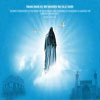
One of Islam's most revered holy sites - the tomb of the Prophet Mohamed (PBUH) at al-Masjid al-Nabawi mosque - could be destroyed and his body removed to an anonymous grave under plans which threaten to spark discord across the Muslim world.
The controversial proposals are part of a consultation document by a leading Saudi academic which has been circulated among the supervisors of al-Masjid al-Nabawi mosque in Medina, where the remains of the Prophet are housed under the Green Dome, visited by millions of pilgrims and venerated as Islam's second-holiest site. The formal custodian of the mosque is Saudi Arabia's ageing monarch King Abdullah.
The plans, brought to light by another Saudi academic who has exposed and criticized the destruction of holy places and artefacts in Mecca - the holiest site in the Muslim world - call for the destruction of chambers around the Prophet's grave which are particularly venerated by Shia Muslims.
The 61-page document also calls for the removal of the Prophet Mohamed's remains to the nearby al-Baqi cemetery, where they would be interred anonymously.
There is no suggestion that any decision has been taken to act upon the plans. The Saudi government has in the past insisted that it treats any changes to Islam's holiest sites with "the utmost seriousness".
But such is the importance of the mosque to both Sunni and Shia Muslims that Irfan al-Alawi warned that any attempt to carry out the work could spark unrest. It also runs the risk of inflaming sectarian tensions between the two branches of Islam, already running perilously high due to the conflicts in Syria and Iraq.
Alawi, director of the Islamic Heritage Research Foundation, told The Independent: "People visit the chambers, which are the rooms where the Prophet's family lived, and turn towards the burial chamber to pray.
"Now they want to prevent pilgrims from attending and venerating the tomb because they believe this is shirq, or idolatry. But the only way they can stop people visiting the Prophet is to get him out and into the cemetery."
For centuries Muslim pilgrims have made their way to Mecca in order to visit the Kaaba - a black granite cubed building said to be built by the Prophet Abraham (PBUH), around which al-Masjid al-Haram, or the Grand Mosque, is built, and towards which every Muslim faces when they pray.
This pilgrimage, or hajj, is a religious duty that has to be carried out at least once in a lifetime.
Many go on to make their way to the nearby city of Medina to pay their respects at the Prophet's tomb.
source : www.abna.ir













